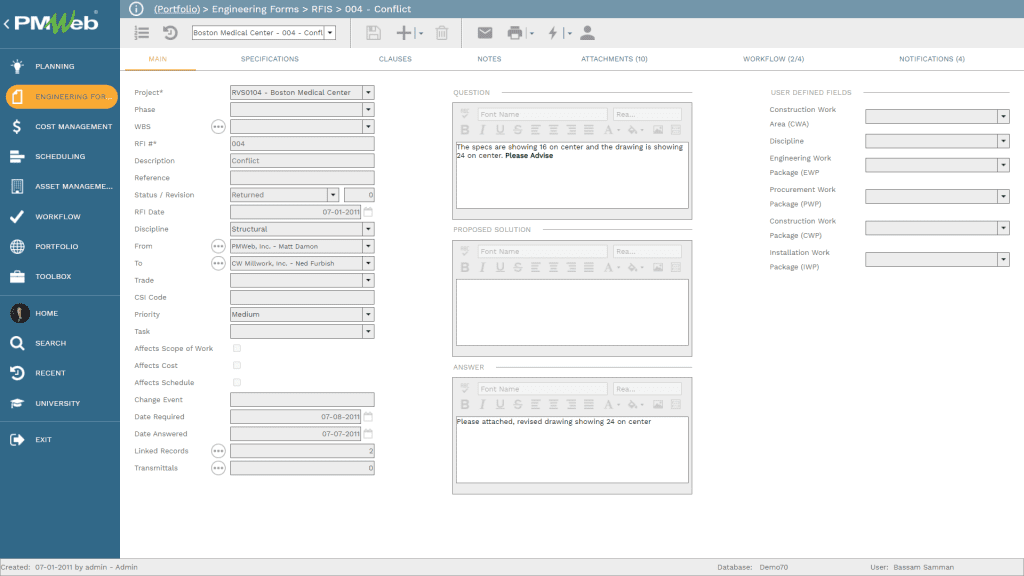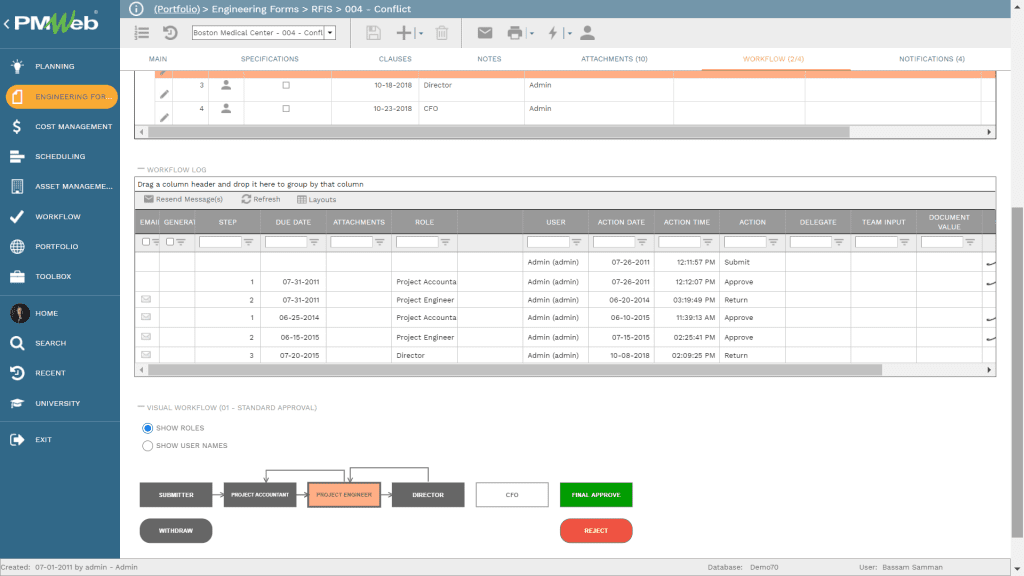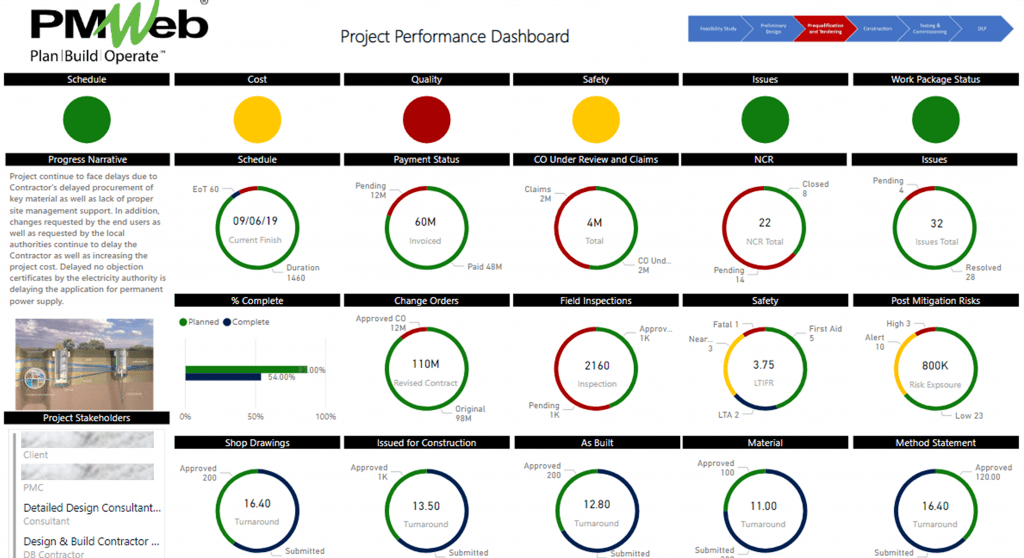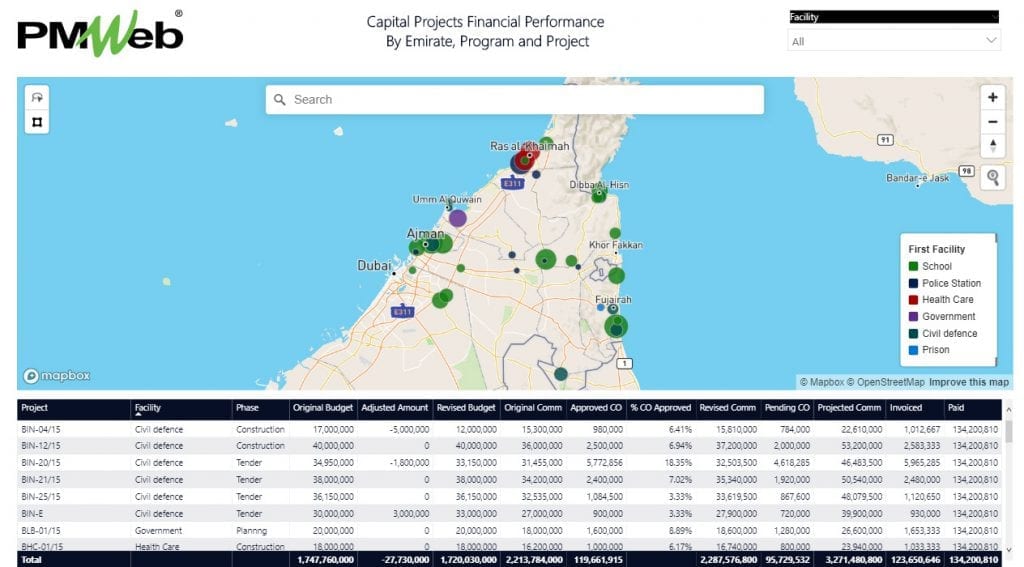It has been reported by many governments that a second COVID-19 wave might appear in the last quarter of 2020. The construction industry like most other industries would be negatively affected by this potential second wave. Nevertheless, and unlike the first wave of the COVID-19 pandemic, many capital construction projects are in better shape to deal with it. Those are the projects that have enforced the implementation of the best practices of social distancing, personal hygiene and protection, and construction site COVID-19 hygiene requirements. In addition, many of those projects have also adopted digital transformation best practices as it relates to Building Information Modelling (BIM) and Project Management Information System (PMIS) that supports the emerging practice of Work-From-Home (WFH) and for which was a crucial requirement to enable to business continuity.
Actually, entities that had Project Management Information System (PMIS) solutions like PMWeb implemented prior to the outbreak of the COVID-19 pandemic, had the least disruption when it came to the continuity of executing the many project management processes needed to successfully manage the delivery of their capital projects and ensure effective collaboration among all entities and individuals involved in delivering those projects.
This was due to a number of reasons. The first of which was because of the fact that their project management information and documents were not stored on MS Excel files at the construction site that were controlled by different individuals who might not have access to those files anymore. Being 100% web-enabled, available as on-premise self-hosted or SaaS, individuals representing the different project entities continued to have secured and authorized access to their project management processes regardless of where they were located. PMWeb’s responsive design also made it more practical for individuals who need to access PMWeb on a mobile smart device like an iPad or Mobile device. PMWeb user interface automatically adjusts itself to the selected device.

The second reason was due to the fact that collaboration between the different entities and individuals was already embedded in each project management process and there was no need for an individual or individuals to distribute and share those documents. The assigned workflow for each project management process ensured that the individuals representing the different project entities continued to be able to submit, review and approve project management processes regardless where they were located. Unlike project mail and other type of email communications, PMWeb workflow allows pre-defining the workflow steps, duration, sequence and available review and approval actions for each individual as well as allows setting the rules for authority approval levels which are based on data captured in each input form. For example, this could be the RFI type or category, whether RFI has schedule or cost impact, value of the contract, value of the change order among many others.

The third reason was due to the fact that information from the many project management processes which might be related to each other were all stored on a secured single data source rather than multiple data silos that needed individuals to extract, transfer, load, associate, format and make it presentable to communicate the project’s performance vital and critical information to the project stakeholders. PMWeb business intelligence reporting as well as third party business intelligence and data visualization applications like MS Power BI were used by those entities to generate the reports and dashboards needed to provide real-time single version of the truth performance status reporting. Those reports and dashboards are configured to allow the stakeholder to drilldown to the source of the reported information so long as he or she has the right permission rights.

For entities who are responsible for managing capital construction projects portfolio within the same country or across different countries across the globe, having a PMIS like PMWeb enables them to have the needed portfolio performance reporting from the captured projects’ performance reporting on PMWeb single data source to be ready for a second COVID-19 wave. Stakeholders from those entities are able to consume the captured projects’ information to generate their needed reports and dashboards.

For an organization like ours who are involved in implementing PMWeb Project Management Information System, we have seen 600% growth in PMIS requirements compared to the first half of 2020 with the anticipated growth to reach 1,200 % if not more by the end of 2020. The massive growth in adopting PMIS by many project owners and project management consultant (PMC) firms is simply due to the fact that they cannot afford the damage caused for their businesses for not being able to continue performing simply because they lack the very much needed digital transformation. Of course, there any other benefits that a PMIS brings to those entities that are as important as business continuity. Those include transparency, accountability, governance, real-time single version of the truth reporting and lean construction management.



